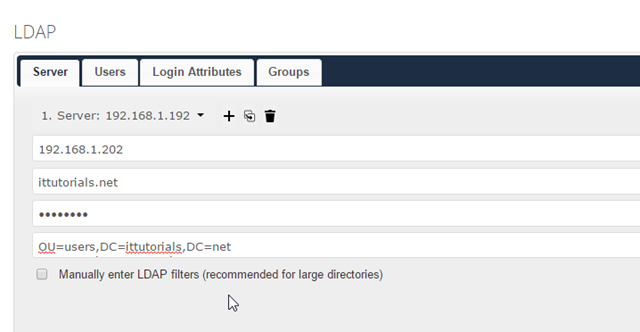

- #Install owncloud ubuntu install
- #Install owncloud ubuntu update
- #Install owncloud ubuntu archive
- #Install owncloud ubuntu for android
- #Install owncloud ubuntu password
#Install owncloud ubuntu for android
GRANT ALL ON owncloud.* to IDENTIFIED BY 'my_password' Ĭonfigure OwnCloud by accessing the URL at Incidentally, there is also an app for Android and iOS which is as good as Dropbox, only it's your own NAS with no storage limits (except what can fit on your drive).
#Install owncloud ubuntu install
Install OwnCloud (with Webdav!) curl | sudo apt-key add -Įcho 'deb /' | sudo tee /etc/apt//owncloud.list

This is important and took days of googling to figure out: at the end of the nf file, you must add the following text: Include /etc/phpmyadmin/nf Install PhpMyAdmin sudo apt-get -y install phpmyadmin sudo systemctl restart rviceĬonfigure your Joomla setup by accessing the URL: There are about three pages of questions to answer but if you have used Joomla before, they should be self-explanatory. Sudo nano /etc/apache2/sites-available/nfĪdd the following text into the newly created file: ĮrrorLog /var/log/apache2/-error_logĬustomLog /var/log/apache2/-access_log commonĬtrl-X to exit, Y to save.

Sudo ln -s /etc/apache2/sites-available/nf /etc/apache2/sites-enabled/nf Sudo touch /etc/apache2/sites-available/nf GRANT ALL PRIVILEGES ON joomladb.* TO IDENTIFIED BY 'my_password' WITH GRANT OPTION
#Install owncloud ubuntu password
Sudo chown -R www-data.www-data /var/www/htmlĬREATE USER PASSWORD FOR = PASSWORD("my_password") Sudo unzip Joomla_3.5.1-Stable-Full_Package.zip -d /var/www/html/ Test that you have successfully set up PHP by entering your browser and using sudo mv /var/Install Joomla sudo apt-get install php7.0-mysql php7.0-curl php7.0-json php7.0-cgi php7.0 libapache2-mod-php7.0 php7.0-mcrypt Install PHP 7.0 sudo apt-get install php7.0 php7.0-mysql php7.0-curl php7.0-gd php7.0-json php7.0-opcache php7.0-xml mcrypt php7.0-mcryptĪdd the following into the newly created file: Ĭtrl-X to exit, Y to save. You can test that MySQL is running by entering: sudo mysql -u root -p The only thing I said yes to was to remove the anonymous user access. Install MySQL sudo apt-get install mysql-server php7.0-mysql Sudo apt-get install apache2 libapache2-mod-php
#Install owncloud ubuntu update
Run the following commands: sudo apt-get update The first time you enter you will need to change the password it will kick you out, and you can re-enter with Putty. Use Putty to access the Pi once it's up and running. Recommend you use the Raspbian implementation until Ubuntu fixes the bug.)Īs it is a server, it runs headless (i.e., without display). For this reason, I have re-created and re-documented below using Raspbian instead, which works exactly the same way. ( Editor note, 1: Ubuntu 16.04 appears to work until you reboot, and the reboot kernel currently upgrades itself such that it does not boot again. Image for Raspberry Pi 3 can be found here. Where you can create users, groups and assigned them permissions, etc.Check out the final product at. Now slide your page down and input the database credentials and click on Finish Setup.Īfter completing the setup you will get the admin dashboard. localhost/owncloud/Įnter new admin credentials to create an admin account and provide the location of the data folder. Change localhost to your server IP address or domain name. Now access the ownCloud directory on a web browser as below. Step 4 – Install ownCloud with Web Installer Mysql> GRANT ALL ON owncloud.* to IDENTIFIED BY '_password_' Use following set of command to login to MySQL server and create database and user. sudo rm -f /tmp/owncloud-10.4.0.tar.bz2Īfter extracting code, let’s create a MySQL database and user account for configuring ownCloud. Sudo tar xjf /tmp/owncloud-10.4.0.tar.bz2
#Install owncloud ubuntu archive
Now extract downloaded archive under website document root and setup appropriate permissions on files and directories. Install MySQL sudo apt-get install -y mysql-server php-mysqlĪfter successfully configuring lamp server on your system, Let’s download latest ownCloud from its official website. Install Apache2 sudo apt-get install -y apache2 libapache2-mod-php Sudo apt-get install -y php php-gd php-curl php-zip php-dom php-xml php-simplexml php-mbstring Install PHP 5.6 or higher version on your Debian system sudo apt-get install python-software-properties If you have already running LAMP stack skip this step else use followings commands to set up the LAMP on the Ubuntu system. To start setup with ownCloud, we first need to set up a running LAMP server. This tutorial will help you to install ownCloud 10 on Ubuntu 19.10, 18.04 LTS & 16.04 LTS systems.


 0 kommentar(er)
0 kommentar(er)
